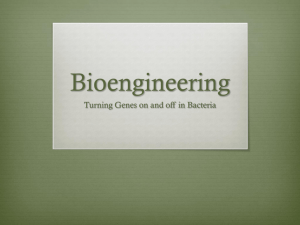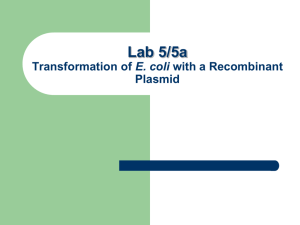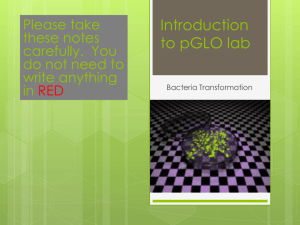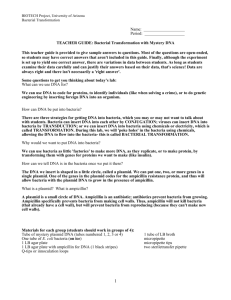File
advertisement
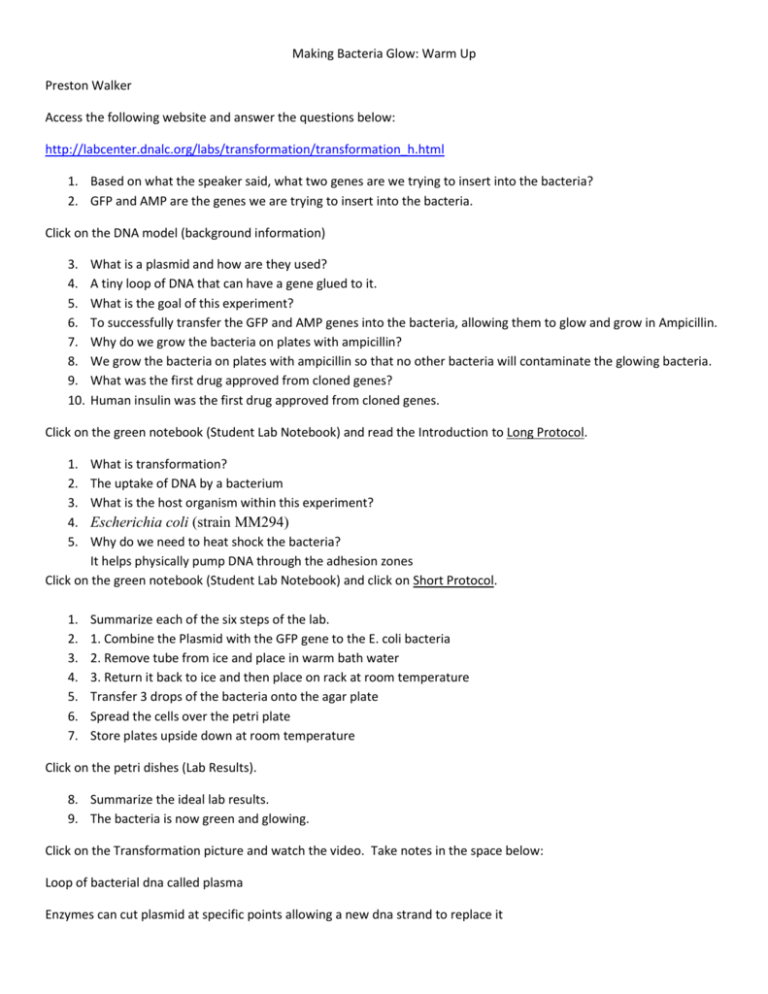
Making Bacteria Glow: Warm Up Preston Walker Access the following website and answer the questions below: http://labcenter.dnalc.org/labs/transformation/transformation_h.html 1. Based on what the speaker said, what two genes are we trying to insert into the bacteria? 2. GFP and AMP are the genes we are trying to insert into the bacteria. Click on the DNA model (background information) 3. 4. 5. 6. 7. 8. 9. 10. What is a plasmid and how are they used? A tiny loop of DNA that can have a gene glued to it. What is the goal of this experiment? To successfully transfer the GFP and AMP genes into the bacteria, allowing them to glow and grow in Ampicillin. Why do we grow the bacteria on plates with ampicillin? We grow the bacteria on plates with ampicillin so that no other bacteria will contaminate the glowing bacteria. What was the first drug approved from cloned genes? Human insulin was the first drug approved from cloned genes. Click on the green notebook (Student Lab Notebook) and read the Introduction to Long Protocol. 1. 2. 3. 4. 5. What is transformation? The uptake of DNA by a bacterium What is the host organism within this experiment? 1. 2. 3. 4. 5. 6. 7. Summarize each of the six steps of the lab. 1. Combine the Plasmid with the GFP gene to the E. coli bacteria 2. Remove tube from ice and place in warm bath water 3. Return it back to ice and then place on rack at room temperature Transfer 3 drops of the bacteria onto the agar plate Spread the cells over the petri plate Store plates upside down at room temperature Escherichia coli (strain MM294) Why do we need to heat shock the bacteria? It helps physically pump DNA through the adhesion zones Click on the green notebook (Student Lab Notebook) and click on Short Protocol. Click on the petri dishes (Lab Results). 8. Summarize the ideal lab results. 9. The bacteria is now green and glowing. Click on the Transformation picture and watch the video. Take notes in the space below: Loop of bacterial dna called plasma Enzymes can cut plasmid at specific points allowing a new dna strand to replace it Bacteria manufacture whatever the new dna codes for. Click on the Glowing Genes picture and perform the activity. Take notes in the space below: Take bacteria cells and put them in plasmid Heat shock at 42 degrees Put in pitri dish for one day Click on the Heat Shock picture and watch the video. Take notes in the space below: E. coli has hundreds of pores called adhesion zones Calcium chloride is added to the outside of the cell membrane Heated to 42 degrees Celsius Frozen to weaken adhesion zones and then heated back up to 42 degrees celsius


